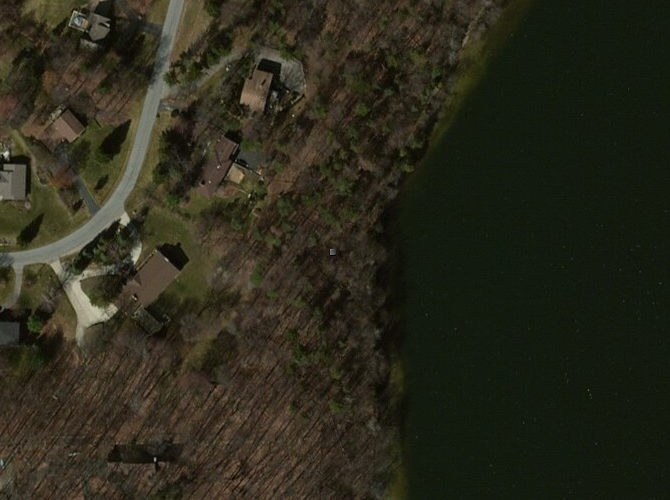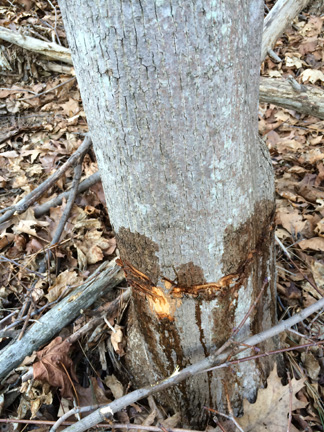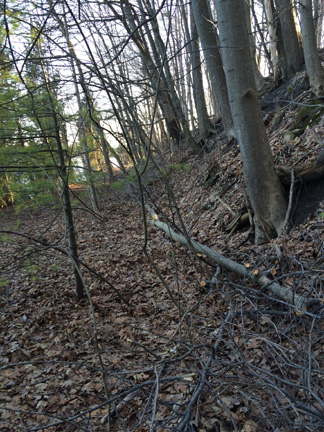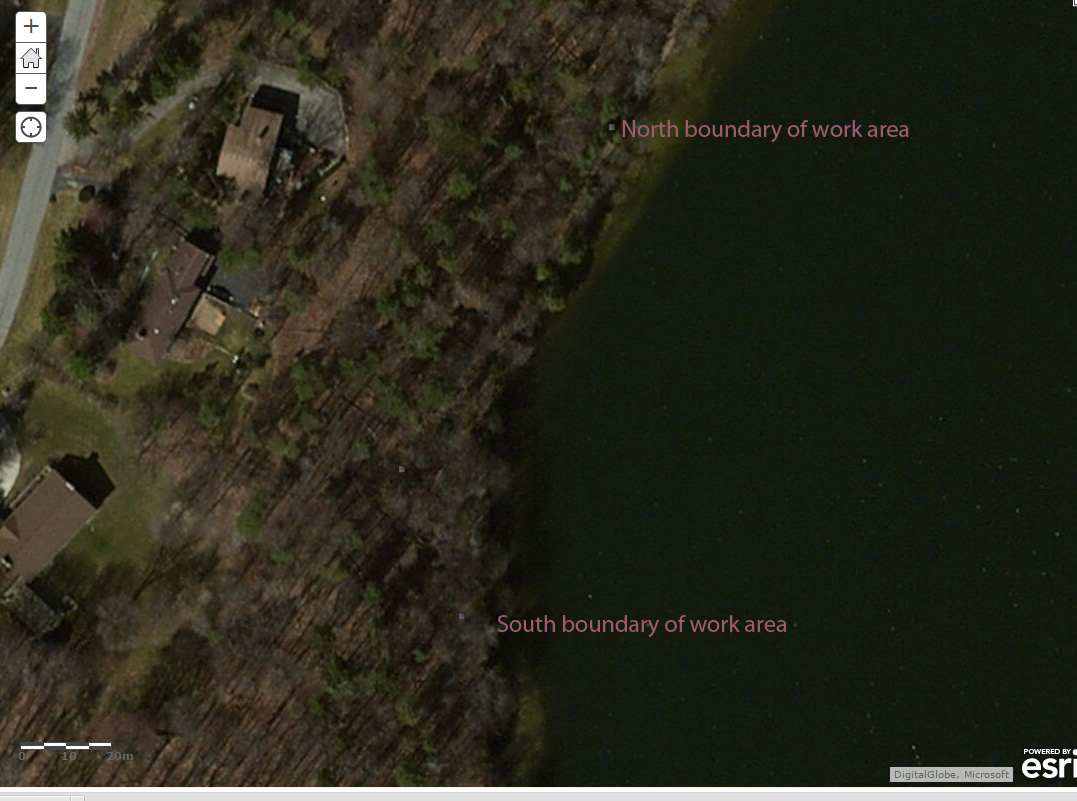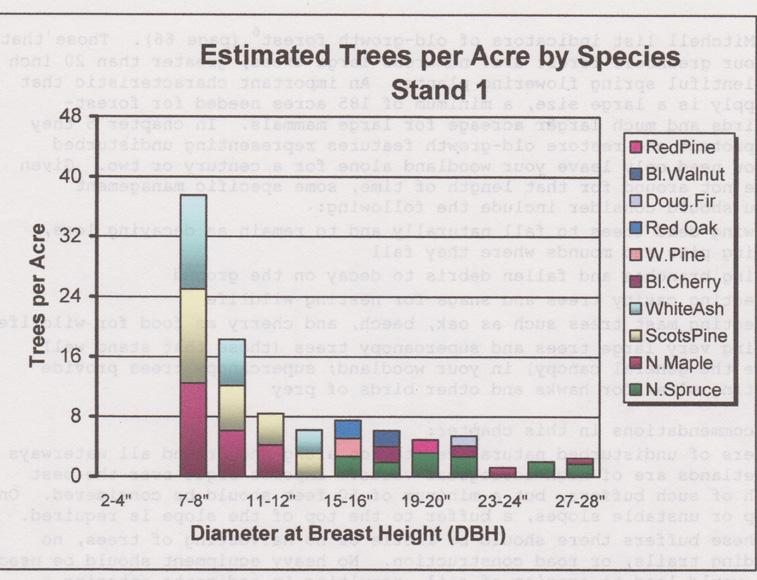
This area of the greenbelt is dominated by norway maple as can be seen by this graph created by Rick McAvinchey in 2013.
. 
Norway maples are an invasive tree that cast a dense shade that excludes understory plants. This is an issue since this area is very steep and prone to erosion. The closely spaced topo lines on the following map gives you an idea of how steep this hillside is. If you desire more detailed information of this area and recommedations please read our Forest Stewardship Plan for this area.
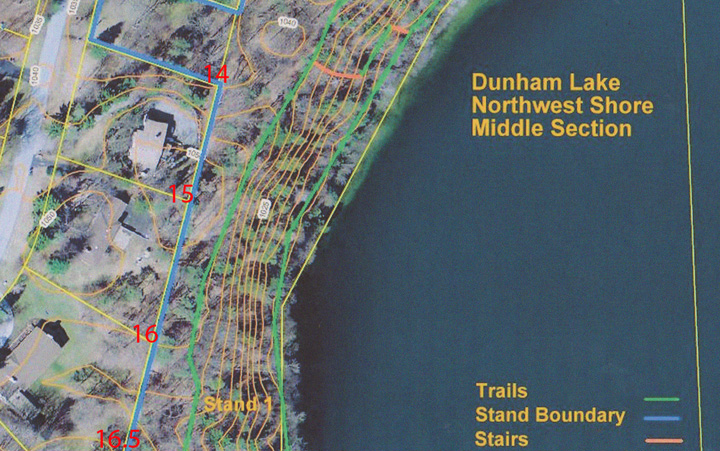
Plan
1. Cut down norway maples and place the logs to provide some erosion stabilization at the base of the hill. The intention is that in time natural debris will build up along the backside of these sections laid out upon the ground to encourage transplanted seedlings or what is known as “live staking” by using selected cuts of on-site vegetation to take root and anchor the erosion control measures.
2. Using a hatchet on norway maples greater than 6 inch diameter, create cuts in the bark and apply herbicide to the wounds. This will result in standing dead trees which are called snags. These trees will probably take a few years to die, but canopy reduction will occur within the first year. The resulting snags provide excellent habitat for wildlife. After the trees fall, fungal communities will decompose them into fertile soil.
3. For trees less than 6 inches in diameter, oil based herbicide will be applied to the bark. This should kill the trees within a few years.
4. This area has established populations of the following invasive species...garlic mustard, asian bittersweet and glossy buckthorn. Aggressive control of these, and other invasive species will be required.
5. Revegetation will be done in a stepwise fashion. Acorns of various oaks will be planted in spring of 2016 since this is inexpensive and not labor intensive. Bareroot oak seedlings will be planted. Large oaks will not be transplanted since they do not thrive without a great deal of attention. Oaks have a deep taproot, which makes them difficult to plant in this area. Live staking will be done in 2016 using cuttings from plants on the greenbelt. Other vegetation, such as virginia creeper, penn sedge and other appropriate native plants may also be planted at a later date. Forest Community Plant list can be found here.
6. Oak dominated landscapes are fire dependant. A burn is planned for spring 2016, but it is unlikely that this area will burn well because of the lack of oak leaf litter. Fire will eventually be a major tool to manage this area.
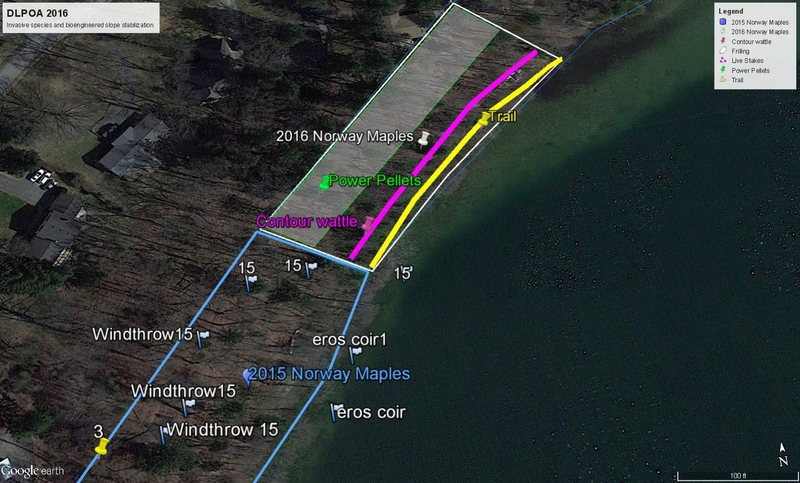
Progress
Fall 2015 asian bittersweet cut and dabbed with herbicide
Norway maples wrapped with orange tape. Boundary of work area deliniated by pink tape. 10 norways cut and placed at the base of the hill, norways greater than 6 inch hacked and squirt, less than 6 inch basal bark application. $2150 paid to Natural Community Services for work done on February 19, 2016.
March 2, 2016, additional frilling of norways along the shoreline and hillside.
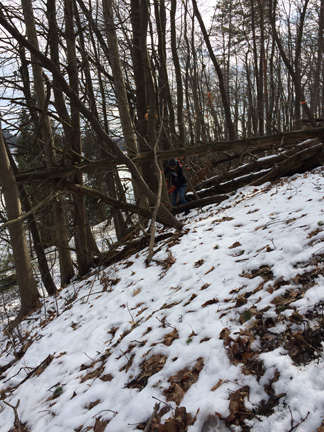
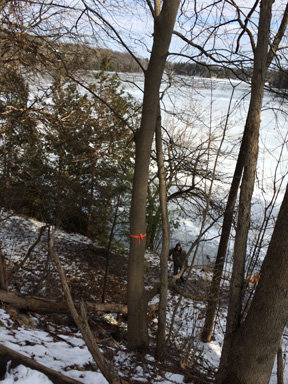

The small grey square indicates the location where the previous images were obtained.
